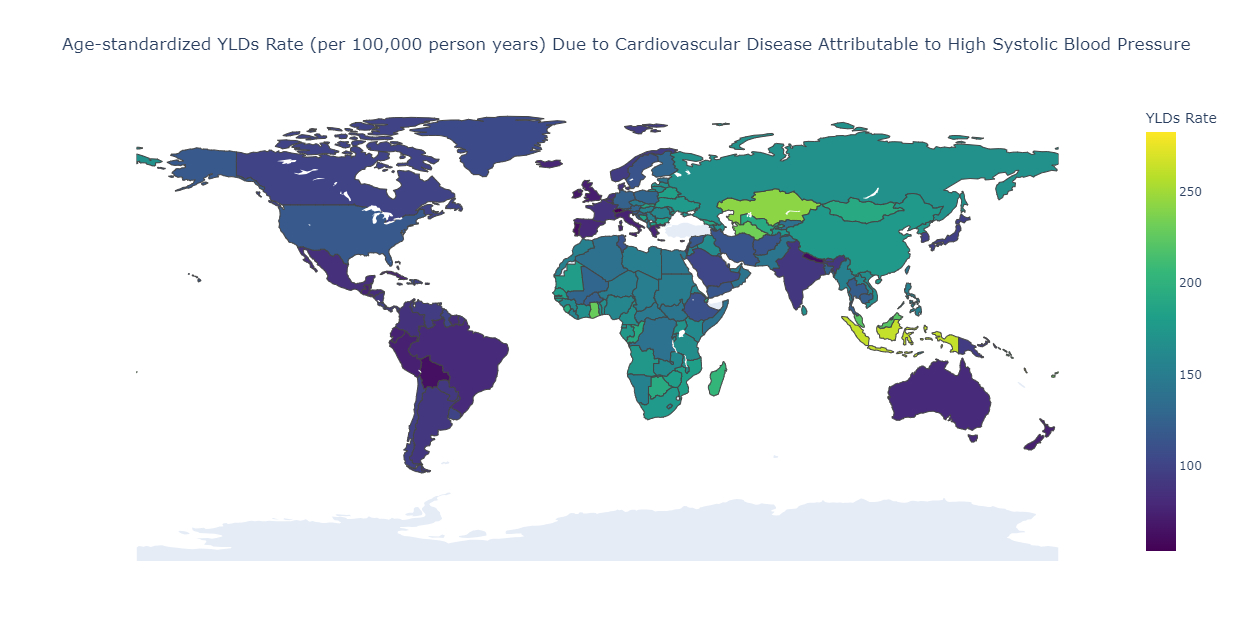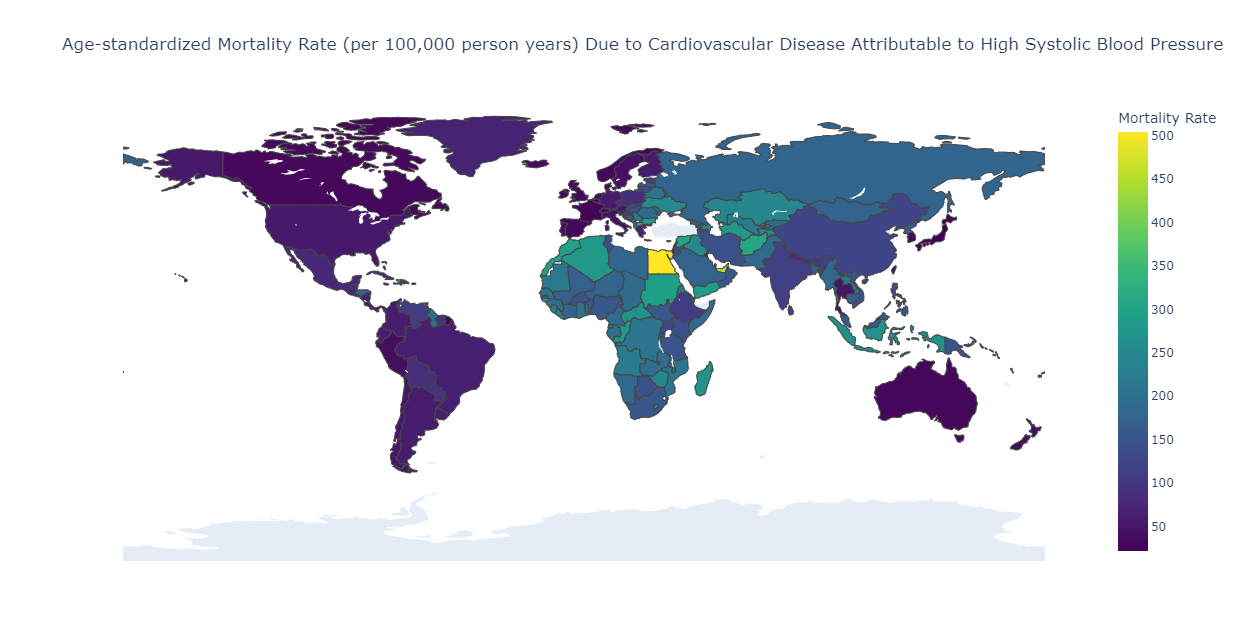Final ID: P-163
Evolving Burden of Cardiovascular Disease attributable to High Systolic Blood Pressure in Women in 204 countries and its territories and Trend from 1990-2021: An Insight from the Global Burden of Disease study 2021
Abstract Body: Background: Cardiovascular disease (CVD) is the leading cause of death globally, with high systolic blood pressure being a significant risk factor, especially for women. This study is the first to estimate the burden of CVD attributable to high systolic blood pressure (HBP) in women over the last three decades, including the first two years of the COVID-19 pandemic, a period marked by challenges in managing non-COVID conditions.
Method: Using the Global Burden of Disease study 2021, we estimated deaths, disability adjusted life years (DALYs), years lived with disability (YLDs), Years of live lost (YLLs) stratified by age, sex, year and location across the 204 countries and territories from 1990-2021.
Results: The total percentage of change (TPC) in death counts increased by 50% (38%-62%), YLDs by 106% (95%-117%), and YLLs by 41% (29%-53%) from 1990 to 2021. Regionally, the highest TPC in deaths was observed in South Asia by 165%, followed by DALYs in Oceania by 154% and YLDs in Andean Latin America by 268% over the same period. Regarding Socio-demographic index (SDI), low-middle SDI countries saw the highest TPC in deaths by 126%. Nationally, the highest TPC in age-standardized mortality rate was observed in the United Arab Emirates by 68%, while the highest YLDs rate was in Oman by 42% from 1990 to 2021. In terms of age, the highest number of deaths was observed in the 80-84 age group by 908,746, and DALYs in the 70-74 age group by 13.4 million in 2021. Among all CVDs, the highest TPC in deaths was observed due to Atrial fibrillation and flutter by 170%, hypertensive heart disease by 86%, Aortic Aneurysm by 65%, Lower extremity peripheral arterial disease by 59%, ischemic heart disease by 52%, and Stroke by 36% from 1990 to 2021.
Conclusion: The staggering figure of 55.09% of CVD deaths in 2021 being attributed to HBP underscores the urgent need for action. Our approach must be multi-faceted and ambitious, intertwining prevention strategies, visionary public health policies, and inclusive stakeholder collaboration, with a special emphasis on women's health. By implementing targeted interventions, harnessing the power of innovative healthcare solutions, and confronting healthcare disparities head-on, we can forge a path towards significantly reducing the toll of HBP-related CVD fatalities
Method: Using the Global Burden of Disease study 2021, we estimated deaths, disability adjusted life years (DALYs), years lived with disability (YLDs), Years of live lost (YLLs) stratified by age, sex, year and location across the 204 countries and territories from 1990-2021.
Results: The total percentage of change (TPC) in death counts increased by 50% (38%-62%), YLDs by 106% (95%-117%), and YLLs by 41% (29%-53%) from 1990 to 2021. Regionally, the highest TPC in deaths was observed in South Asia by 165%, followed by DALYs in Oceania by 154% and YLDs in Andean Latin America by 268% over the same period. Regarding Socio-demographic index (SDI), low-middle SDI countries saw the highest TPC in deaths by 126%. Nationally, the highest TPC in age-standardized mortality rate was observed in the United Arab Emirates by 68%, while the highest YLDs rate was in Oman by 42% from 1990 to 2021. In terms of age, the highest number of deaths was observed in the 80-84 age group by 908,746, and DALYs in the 70-74 age group by 13.4 million in 2021. Among all CVDs, the highest TPC in deaths was observed due to Atrial fibrillation and flutter by 170%, hypertensive heart disease by 86%, Aortic Aneurysm by 65%, Lower extremity peripheral arterial disease by 59%, ischemic heart disease by 52%, and Stroke by 36% from 1990 to 2021.
Conclusion: The staggering figure of 55.09% of CVD deaths in 2021 being attributed to HBP underscores the urgent need for action. Our approach must be multi-faceted and ambitious, intertwining prevention strategies, visionary public health policies, and inclusive stakeholder collaboration, with a special emphasis on women's health. By implementing targeted interventions, harnessing the power of innovative healthcare solutions, and confronting healthcare disparities head-on, we can forge a path towards significantly reducing the toll of HBP-related CVD fatalities
More abstracts on this topic:
A Machine Learning Approach to Simplify Risk Stratification of Patients with Atherosclerotic Cardiovascular Disease
Li Hsin Fang, Gluckman Ty, Nute Andrew, Weerasinghe Roshanthi, Wendt Staci, Wilson Eleni, Sidelnikov Eduard, Kathe Niranjan, Swihart Charissa, Jones Laney
A durable reduction in blood pressure by ultrasound renal denervation: A real-world, single center experienceKing Jordan, Gharib Wissam



